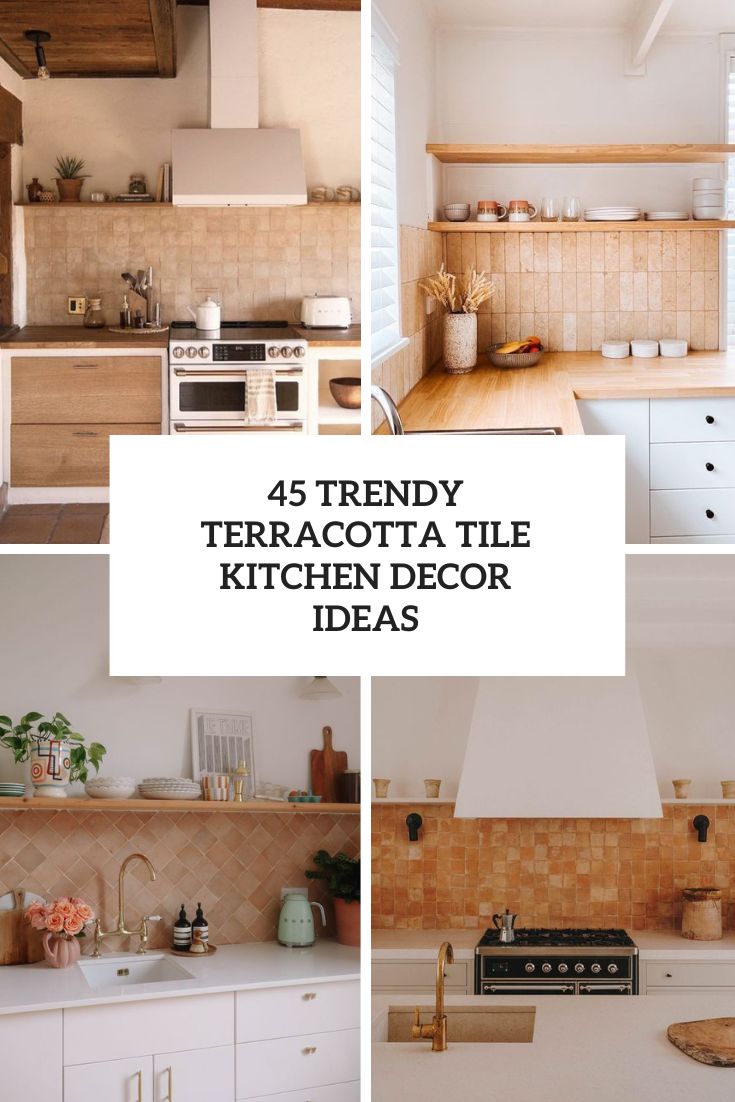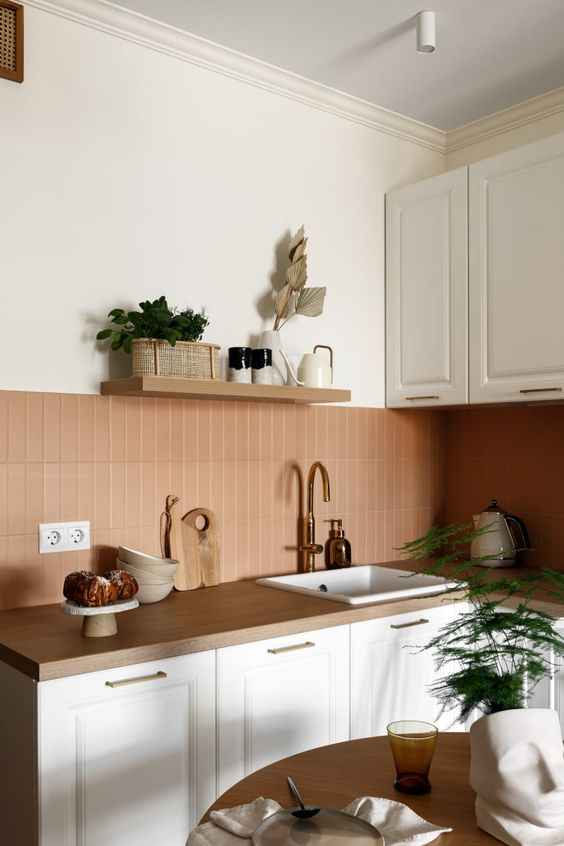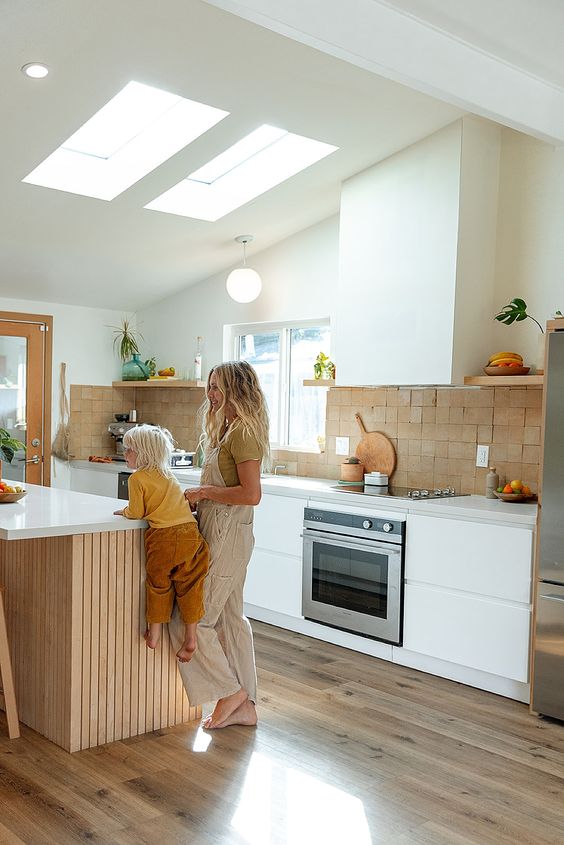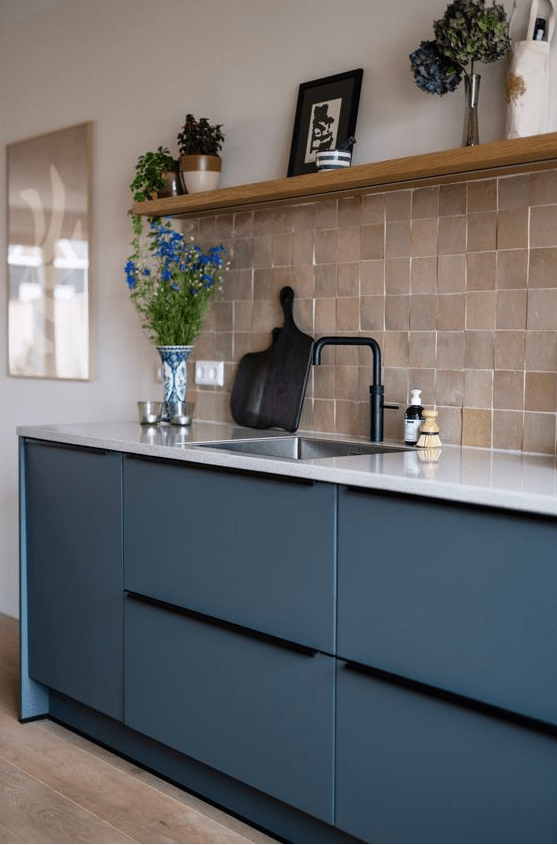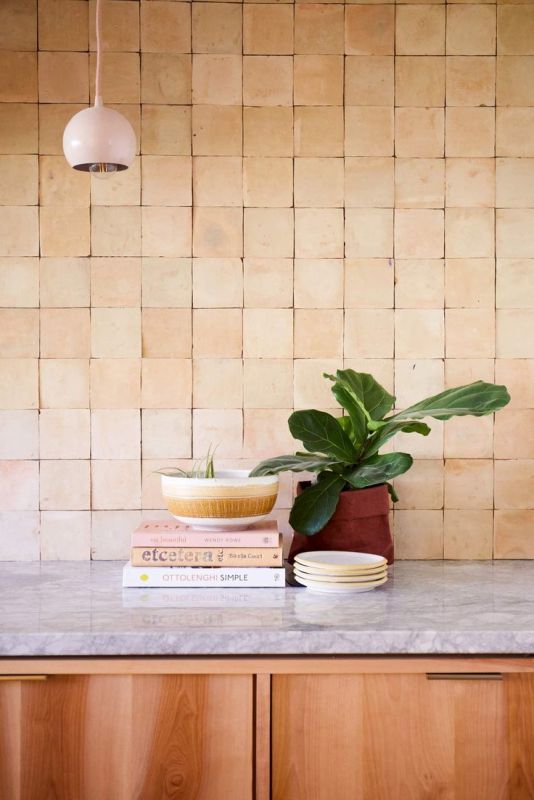Earthy colors and touchable textures are two main trends in home decor that are here to stay, and they influence the whole sphere a lot. You may see a lot of warm and inviting color palettes, various touchable fabrics that are now on top thanks to these trends. If you’re looking to hop on this trend, there’s one material that nails both the color and texture aspects perfectly and it’s terracotta tile. Not only does it bring that warm, earthy vibe, but it also offers a texture that’s totally unique.
What Is Terracotta Tile?
So, let’s break it down. What even is terracotta tile? These beauties are all-natural, made from good old-fashioned clay that’s shaped and then baked into something hard and durable. I’ve seen some of them get a special finish that tightens up the surface, making them less likely to soak up water—super important if you’re using them in a kitchen or bathroom. The colors? Oh man, they’re stunning. We’re talking the whole range of earthy tones—from soft yellows and warm browns to deep, rich reds, and even some lovely pinks. Plus, you can choose how shiny you want them. Semi-glazed or fully glazed tiles give you that extra pop of color and protection from spills, stains, and all that kitchen mess. On the flip side, if you’re more into a natural look, unglazed tiles are your jam. They might need a little extra love, like a good sealer to keep them from soaking up too much water, but they’ve got that raw, organic charm.
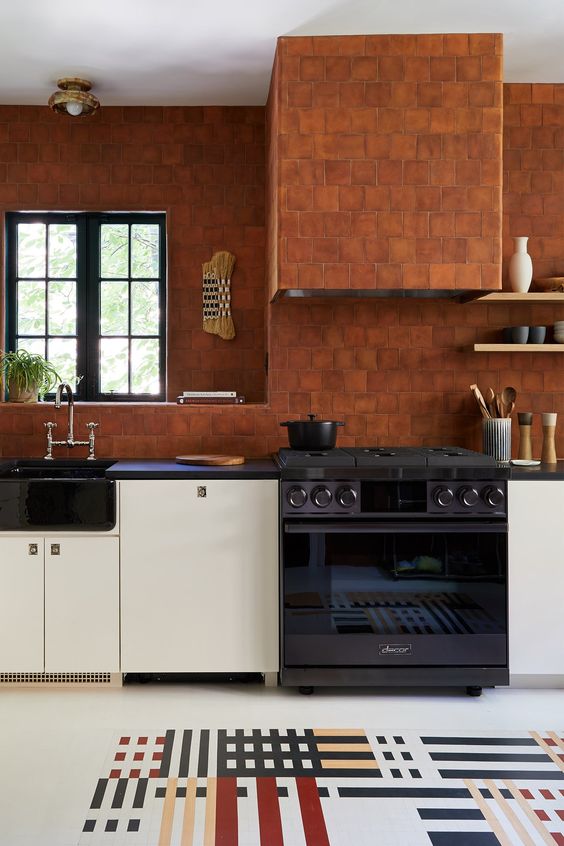
A bold and unique kitchen with white cabinets, black countertops and super bright terracotta tiles on the walls and hood.
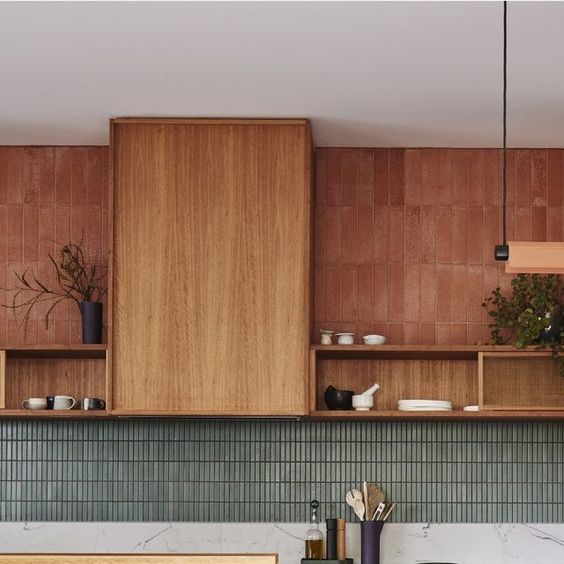
A bold kitchen with stained cabinets and a hood, a green skinny tile backsplash, open shelves and terracotta tiles.

A bold kitchen with white and orange cabinets, white countertops and a glazed terracotta tile backsplash plus black handles.
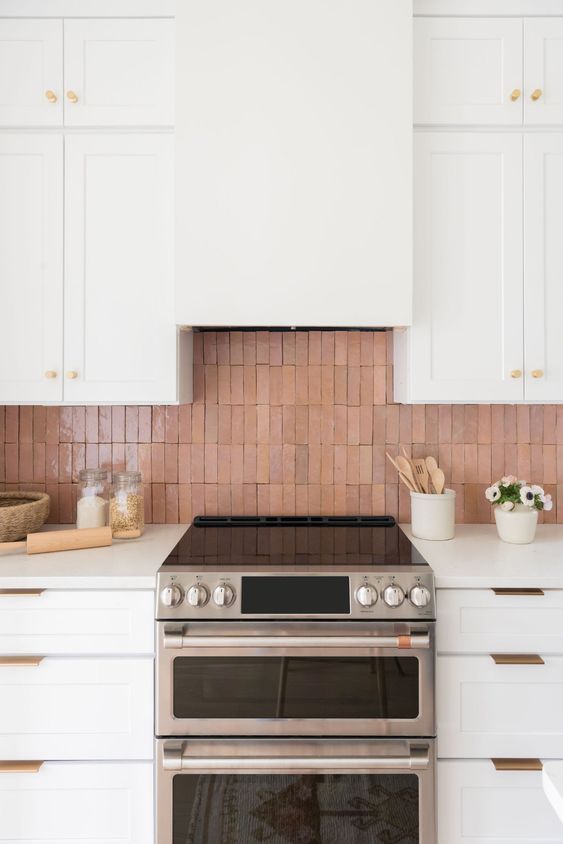
A chic creamy kitchen with shaker style cabinets, white countertops, gold handles and a glazed terracotta tile backsplash.
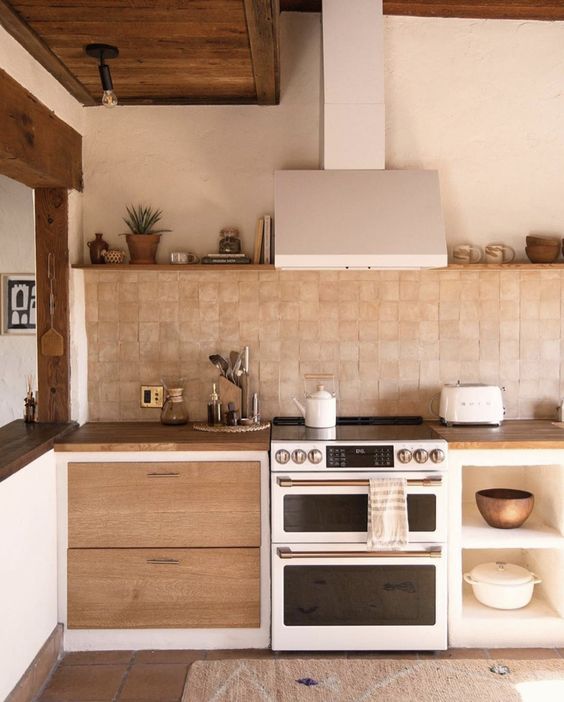
A chic earthy kitchen with white and stained cabinets, a terracotta tile backsplash and butcherblock countertops, open shelves and metal appliances.
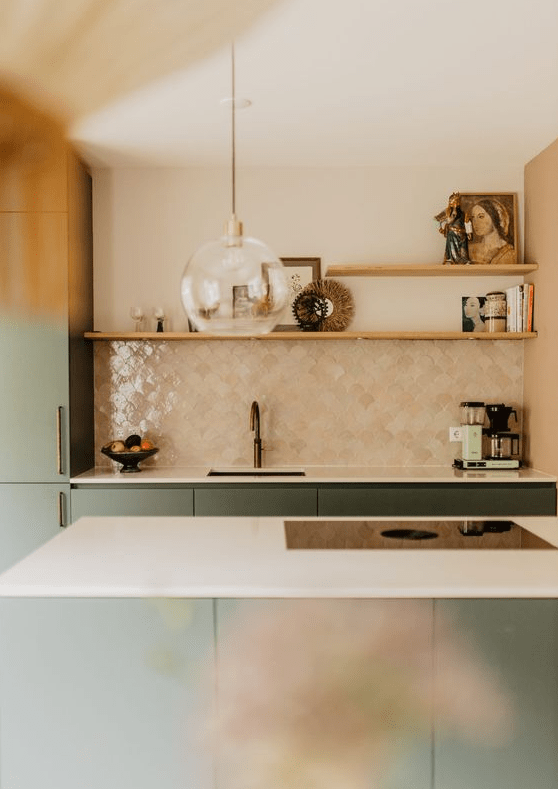
A chic green kitchen with white countertops and a tan fish scale tile backsplash and open shelves.

A chic modenr kitchen with a niche with built-in stained cabinets, a terracotta tile backsplash and a hex terracotta tile floor.
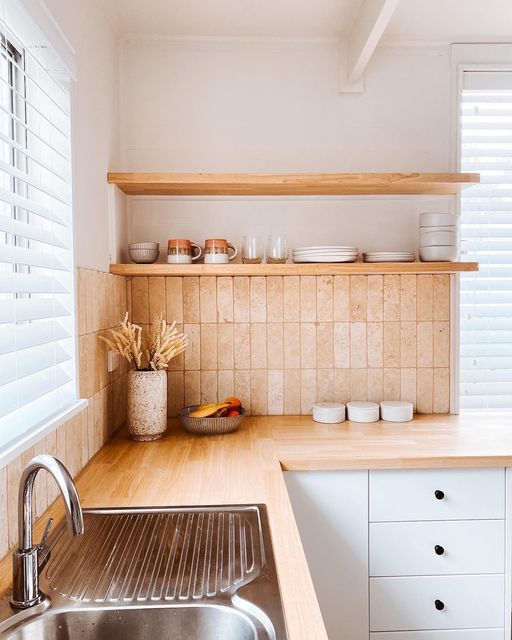
A chic white kitchen with butcherblock countertops, a skinny terracotta tile backsplash and open shelves.
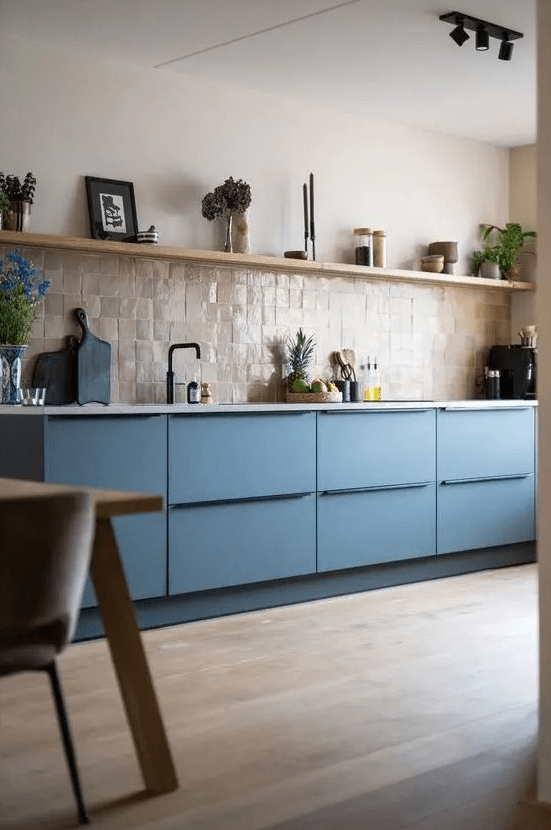
A contemporary blue metal kitchen with a tan and beige tile backsplash and an open shelf over it is wow.
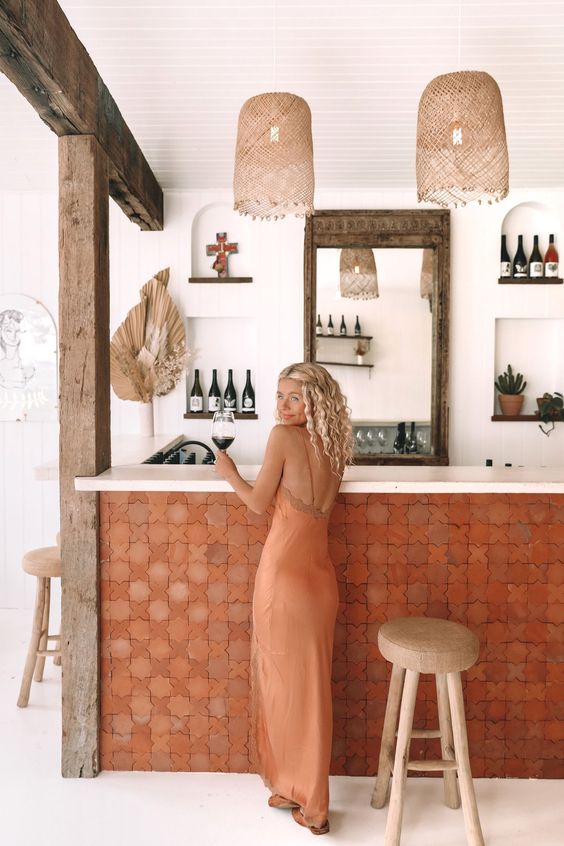
A cool boho space with a kitchen island and countertop clad with terracotta tiles, woven lamps and reclaimed wooden beams and pillars.

A cozy modern earthy kitchen with stained cabients, a glazed terracotta tile backsplash, stained furniture and lots of potted greenery.
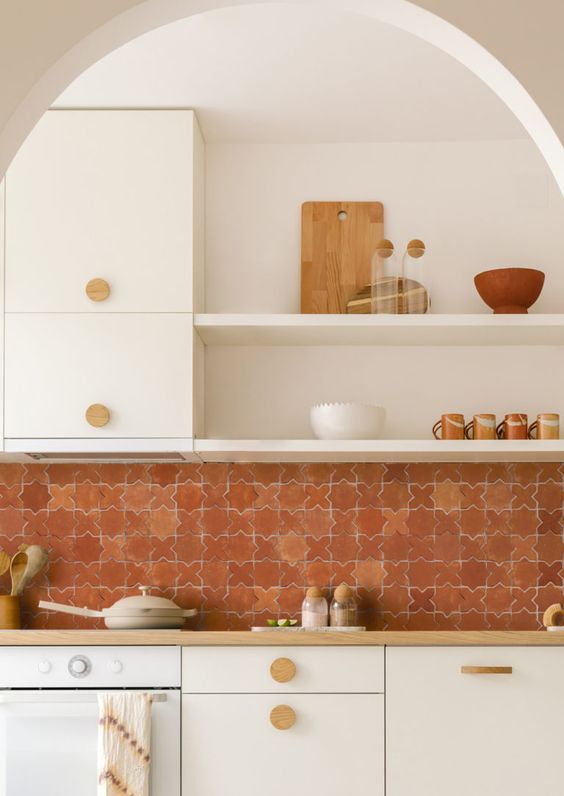
A creamy kitchen with sleek cabinets, butcherblock countertops, a bold terracotta tile backsplash and open shelves.
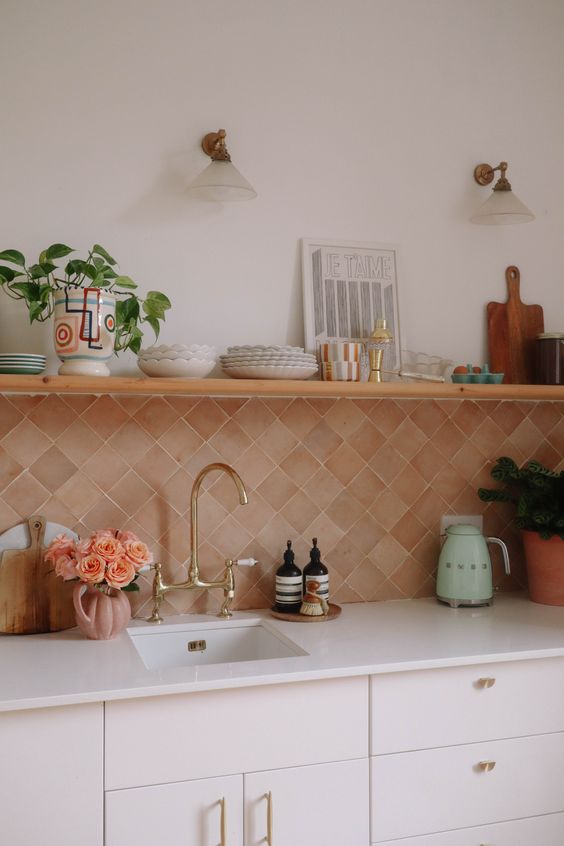
A creamy kitchen with white countertops, a diagonal terracotta tile backsplash and an open shelf fro storage and decor.
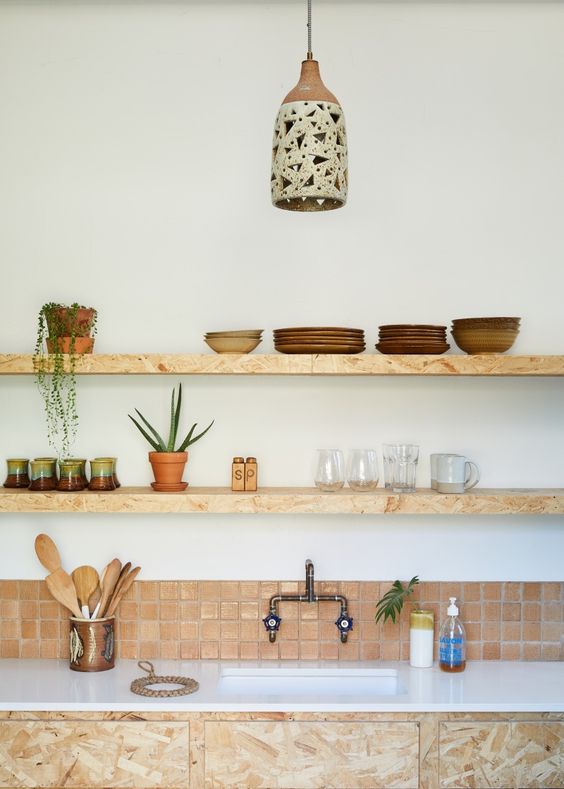
A creative kitchen with a small terracotta tile backsplash, open shelves instead of cabinets and a pendant lamp.
How To Use Terracotta Tiles in a Kitchen
Terracotta tiles are super versatile and can be used in a variety of ways to add character and charm to your kitchen.
Let’s start from the ground up. Terracotta tile flooring is a classic choice that instantly brings warmth and a rustic vibe to your kitchen. One popular approach is to lay the tiles in a traditional grid pattern, which keeps things simple. But if you’re feeling a bit adventurous, you might want to consider a herringbone or diagonal pattern. These layouts add a bit of visual interest and can make the space feel larger. Mix and match different shades of tiles to create a mosaic effect. This works particularly well in Mediterranean or Southwestern-inspired kitchens.
Now, if you’re not ready to commit to a full floor of terracotta, consider using it as a backsplash. Smaller tiles, like hexagons or squares, can create a unique pattern that draws the eye, without overwhelming your space. I’m a sucker for a classic subway tile layout, so if you’re like me, try using terracotta tiles in that style behind your stove or sink for just a hint of warmth.
Thinking about going all in with terracotta? Consider using these tiles on your countertops or kitchen island. Although in my opinion, that’s a good choice only for an outdoor kitchen.
If you don’t want to commit to large areas, using these tiles as accents is a great way to incorporate the trend in a subtle, stylish way. One idea is to create a terracotta tile border along the edges of your kitchen floor or around your backsplash. Another option is to use these tiles to frame specific areas, like the wall behind your stove or a small section of your kitchen wall where you display artwork or shelving. You could also use terracotta tiles as a tabletop surface for a kitchen table or breakfast nook.
Whether you’re going big with flooring or countertops or keeping it simple with a few accents, these tiles are a fantastic way to bring a bit of earthy charm into your home.
Terracotta Tile Pros
Terracotta tiles are very durable. Glazed terracotta is especially tough, but even unglazed tiles can last a long time if you seal them properly. What’s more, terracotta tiles bring this gorgeous, earthy style into your home that’s full of depth and texture. They are perfect for creating trendy and welcoming modern earthy spaces and giving modern, Scandinavian and even minimalist kitchens a trendy and warm feeling.
Plus, terracotta tiles are sustainable and recyclable choice, which is a nice bonus if you’re trying to go green with your home. Clay is a natural product that’s more affordable than natural stone or porcelain tiles, and if you’re handy with DIY projects, installing terracotta tile can be a fun weekend job that saves you some cash.
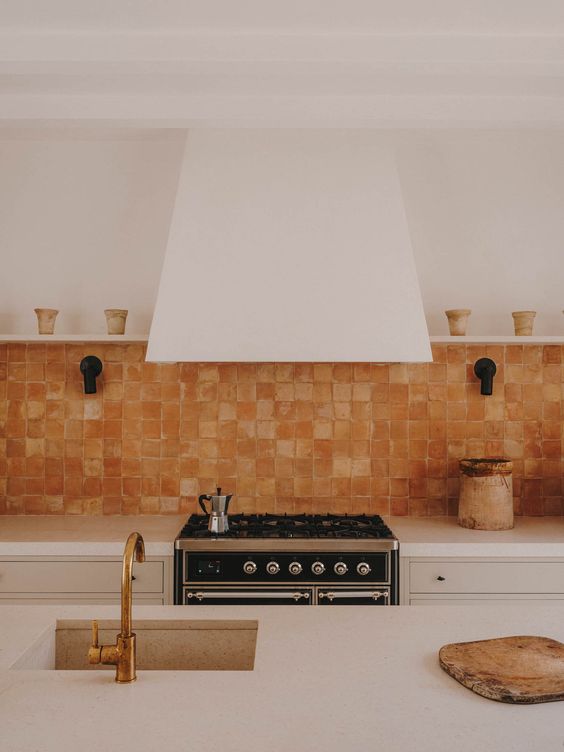
A lovely kitchen with stained cabinets, white countertops, a bold glazed terracotta tile backsplash and open shelves.
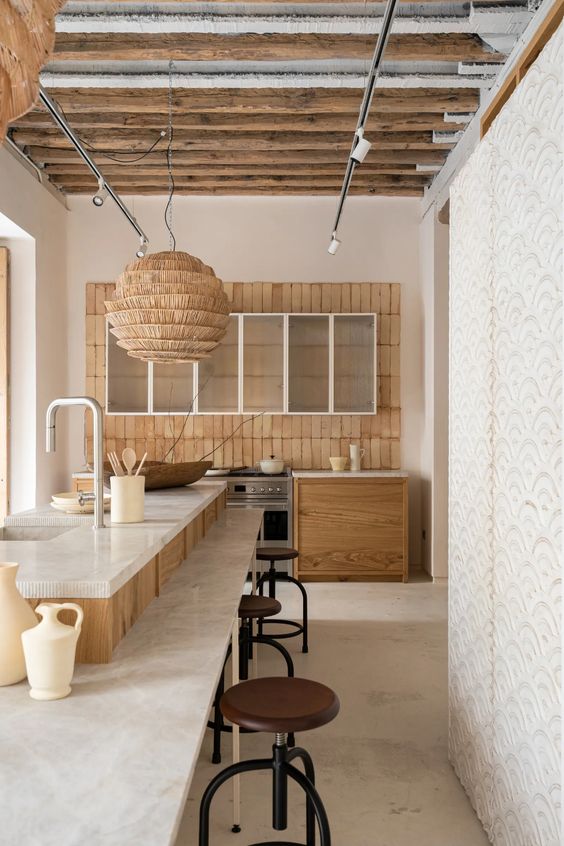
A modern country kitchen with stained cabinets, a terracotta tile backsplash, a large kitchen island with an eating zone.
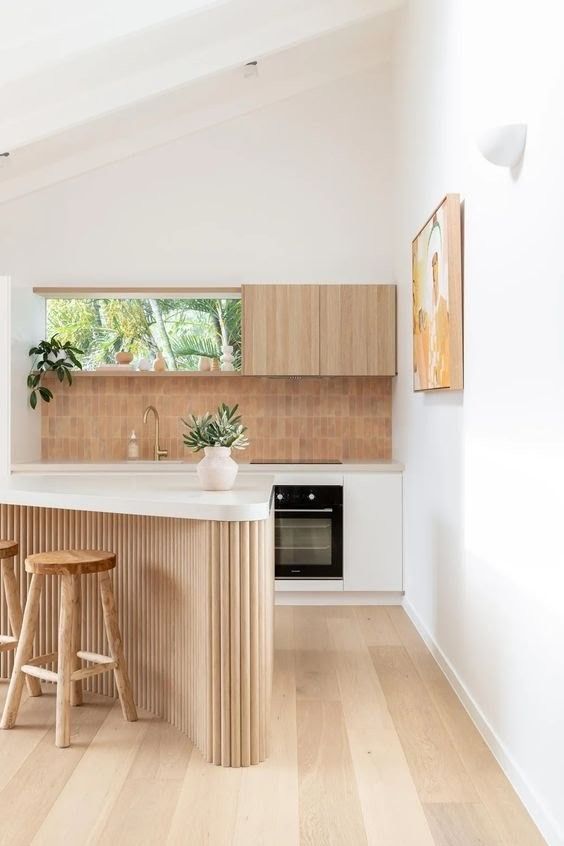
A modern kitchen with stained and white cabinetry, a terracotta tile backsplash, a fluted kitchen island with white countertops.

A modern white kitchen with butcherblock countertops, a terracotta tile backsplash and black hardware and fixtures.
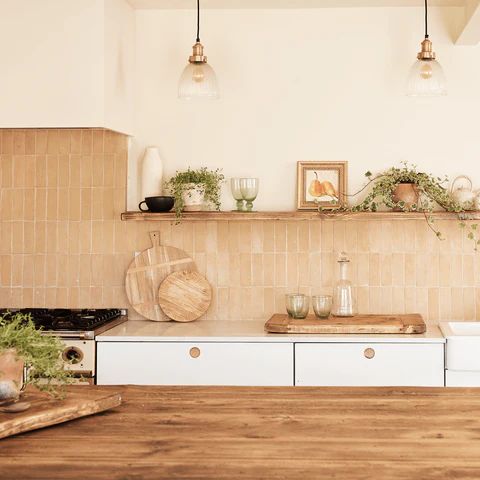
A modern white kitchen with sleek countertops, a terracotta tile backsplash, a shelf with decor and greenery.
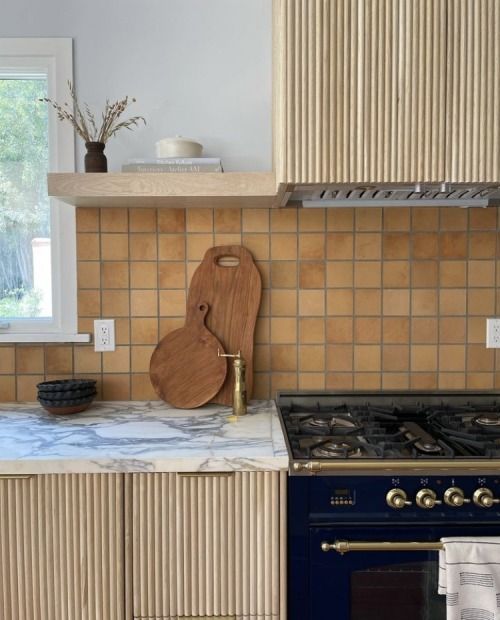
A neutral fluted kitchen with white stone countertops and a terracotta tile backsplash, open shelves and brass touches.
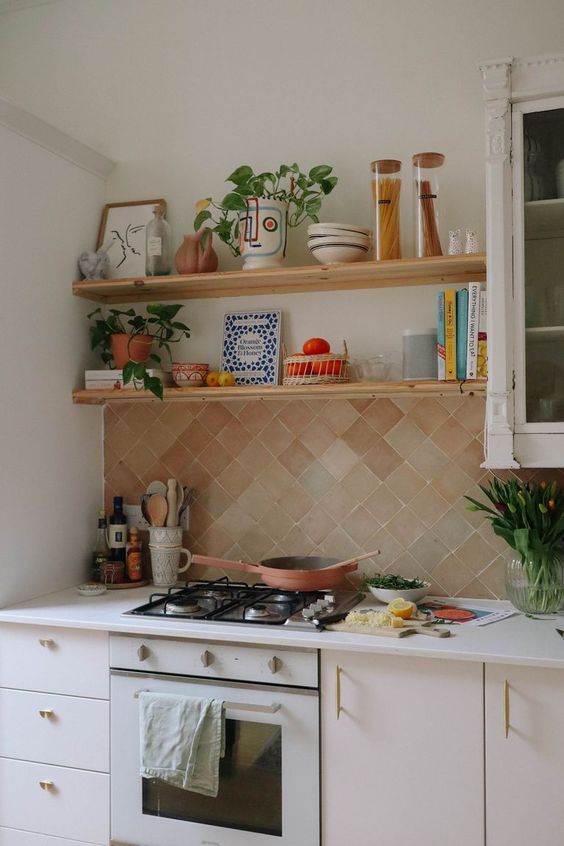
A neutral kitchen with a diagonal terracotta tile backsplash, open shelves, potted greenery and lovely decor.
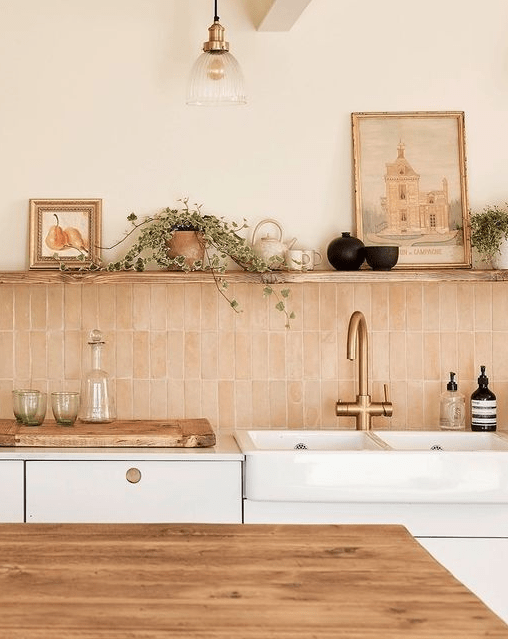
A neutral kitchen with white cabinets, a blush stacked tile backsplash, an open shelf and some decor.
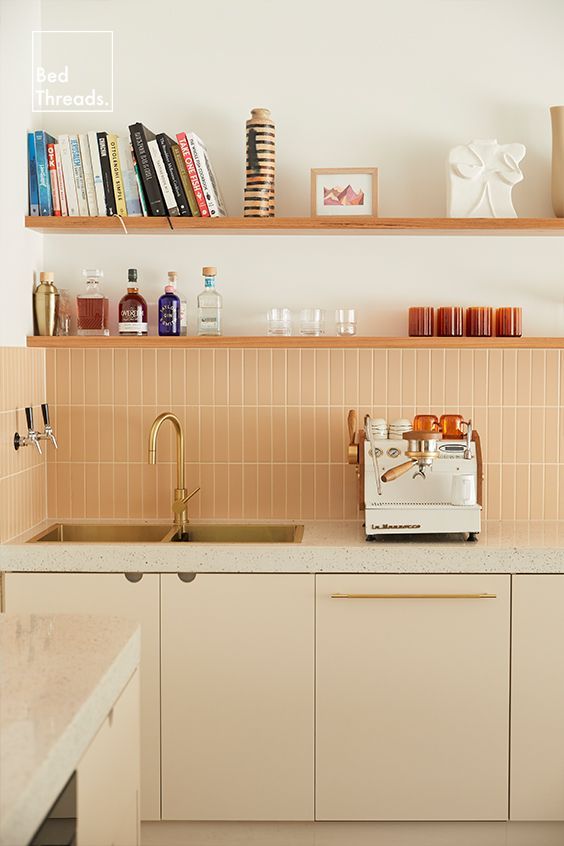
A neutral kitchen with white terrazzo countertops and a skinny terracotta tile backsplash, open shelves and some decor.
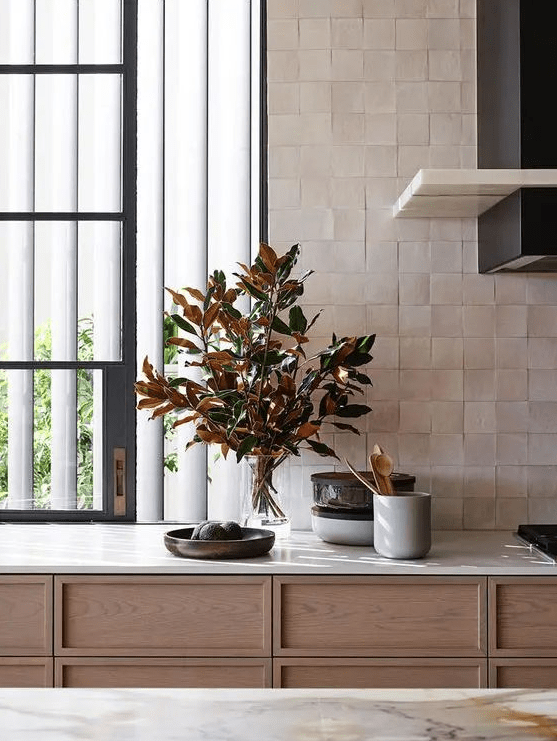
A refined stained kitchen with white countertops, a black hood, a blush tile backsplash for a textural touch.
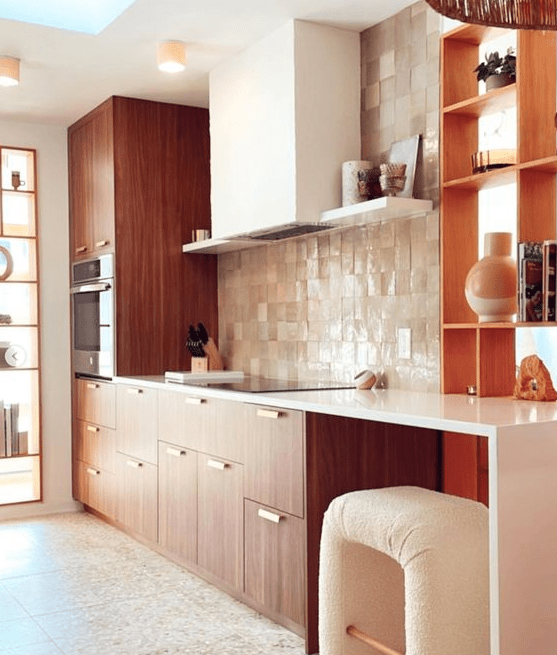
A rich-stained kitchen with a tan tile backsplash, white countertops, a white hood and a lovely bent stool.
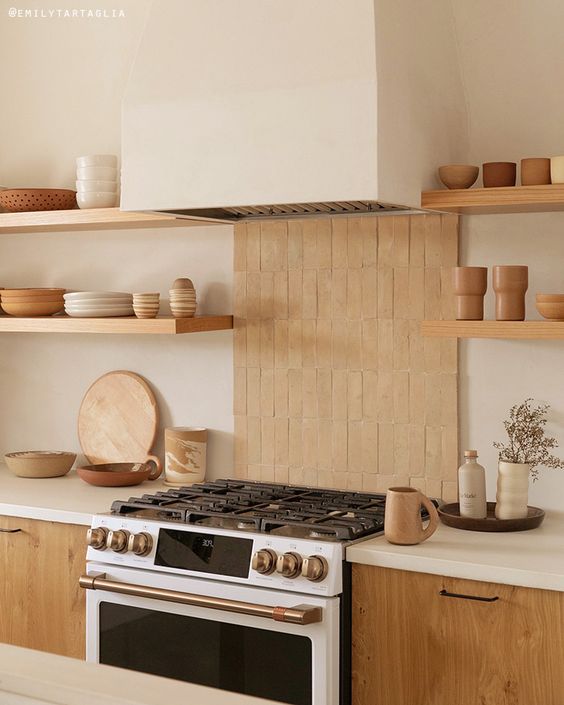
A serene kitchen with stainec abinets, white countertops, an unglazed terracotta tile backsplash and open shelves.
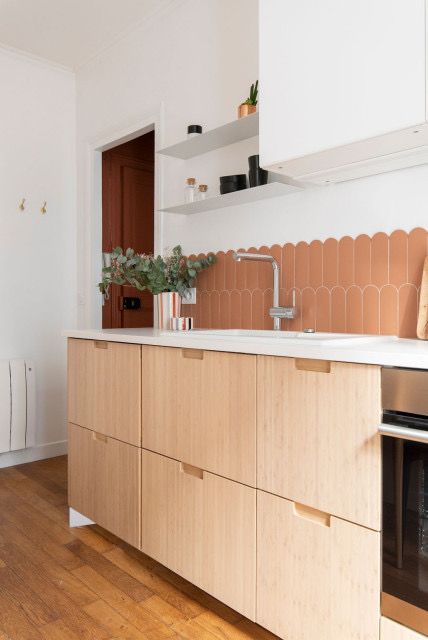
A sleek minimalist kitchen with stained cabinets, white countertops and an arched terracotta tile backsplash.
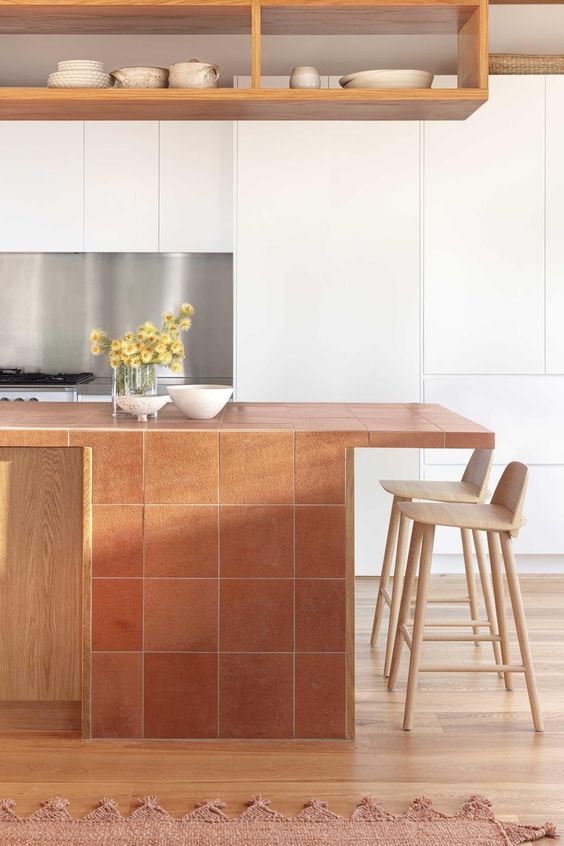
A sleek white kitchen with a kitchen island clad with terracotta tiles, open shelves, tall stools and some blooms.
Terracotta Tile Cons
Of course, like anything, terracotta has its downsides. It is a porous substance similar to natural travertine, so it needs to be properly glazed or sealed to make it water-resistant—especially important for areas like kitchens.
While glazed tiles won’t soak up water, they can get pretty slippery when wet, so make sure you go for a slip-resistant finish if you’re planning to use them in places prone to spills.
If you’re opting for unglazed tiles, sealing them should be your first move to keep them looking good. There are commercial sealers made specifically for terracotta, or you can whip up your own if you’re feeling adventurous.
At the end of the day, terracotta tile is a fantastic way to bring those earthy, tactile trends into your home. It’s warm, it’s textured, and with the right care, it can last you for years..

A stained fluted kitchen with white countertops and unglazed terracotta tiles, a white kitchen island and a gold lamp.
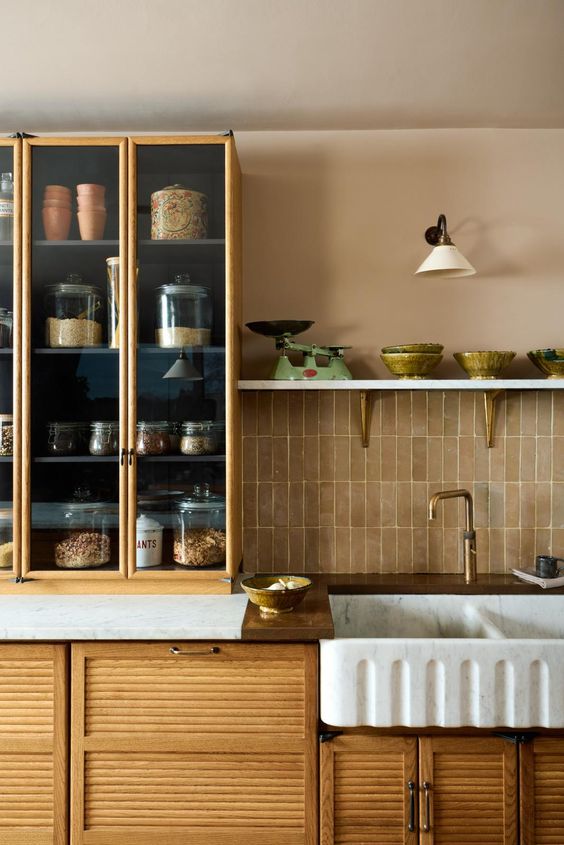
A stained kitchen with fluted cabinets, stone countertops, glass cabinets and a glazed terracotta tile backsplash.
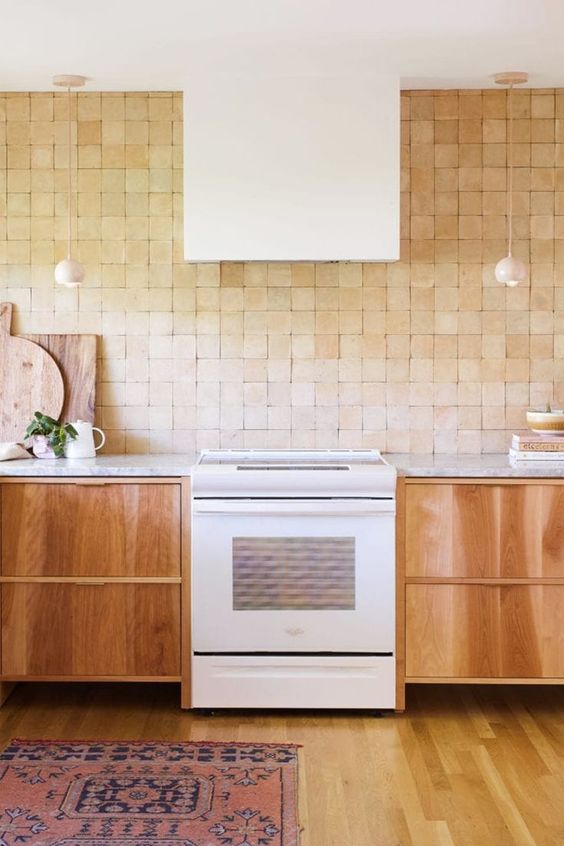
A stained kitchen with stone countertops, a terracotta tile backsplash and white appliances is a lovely space.
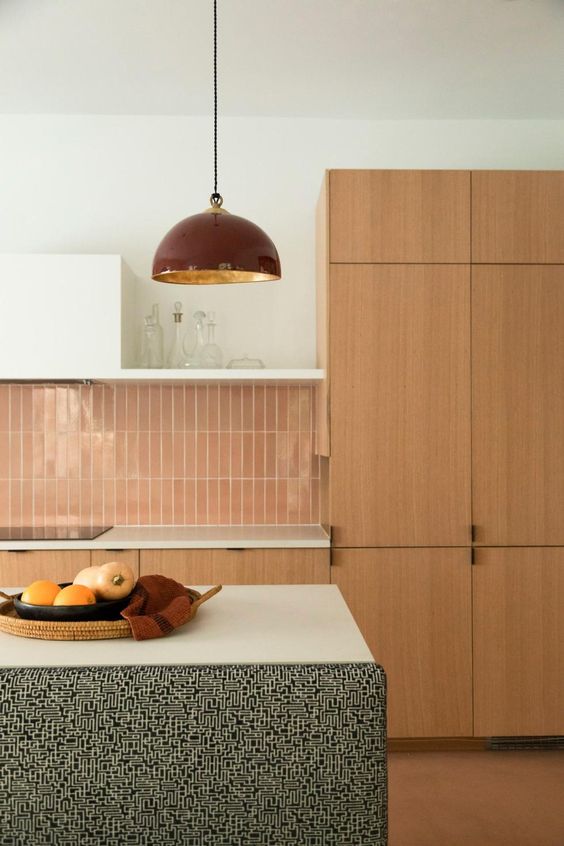
A stained mid-century modern kitchen with sleek cabinets, white countertops, a glazed terracotta tile backsplash.
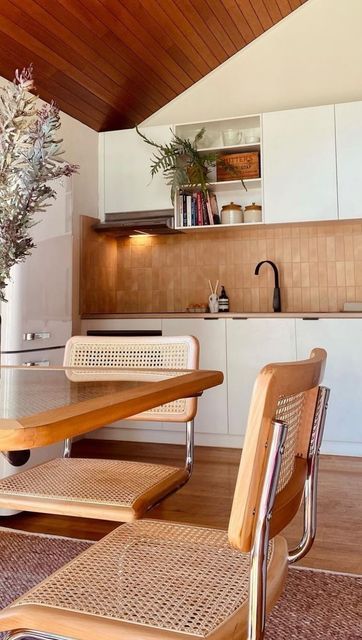
A stylish modern kitchen with sleek white cabinets, butcherblock countertops, a terracotta tile backsplash, a glass table and cane chairs.

A two-tone kitchen with neutral and stained cabinets, a white countertop and a beige tile backsplash.
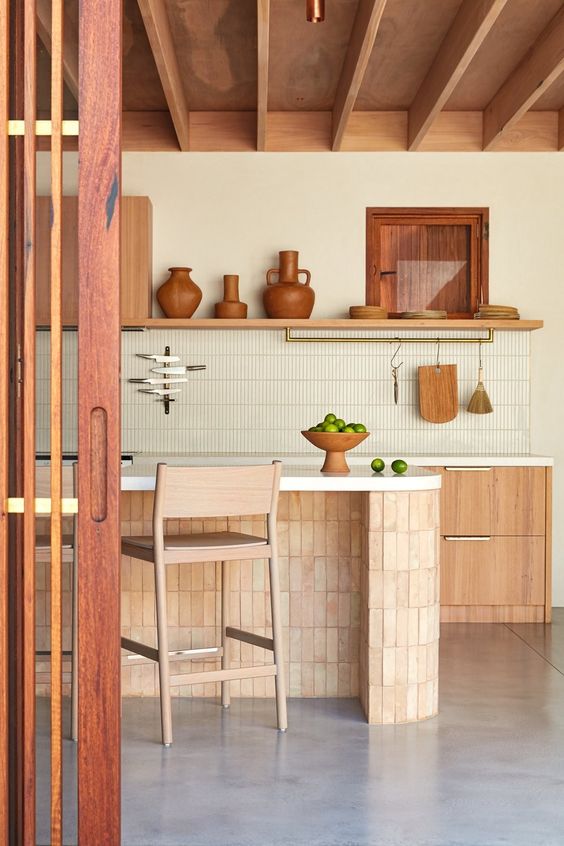
A welcoming earthy kitchen with a wooden ceiling, stained cabinets, a kitchen island clad with terracotta tile, stools and shelves.
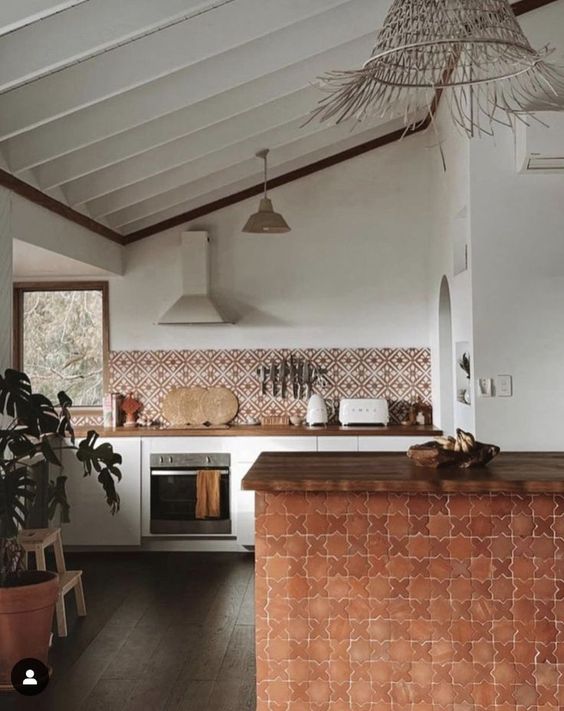
A welcoming kitchen with sleek white cabinets, butcherblock countertops, a printed tile backsplash and a terracotta tile kitchen island.

A white shaker style kitchen with a terracotta tile backsplash, white countertops and stained shelves and trim on the hood.
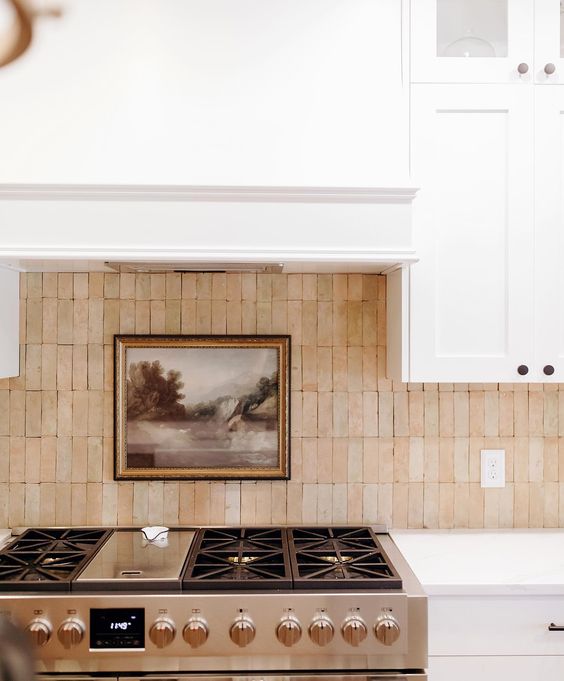
A white shaker style kitchen with unglazed terracotta tiles, white countertops and an artwork is a beautiful and chic space.

An elegant white kitchen with lower cabinets, a kitchen island clad with terracotta tiles, a boho rug and cool lamps.

Light-stained kitchen cabinets, a terracotta tile backsplash, an open shelf with decor and white countertops.
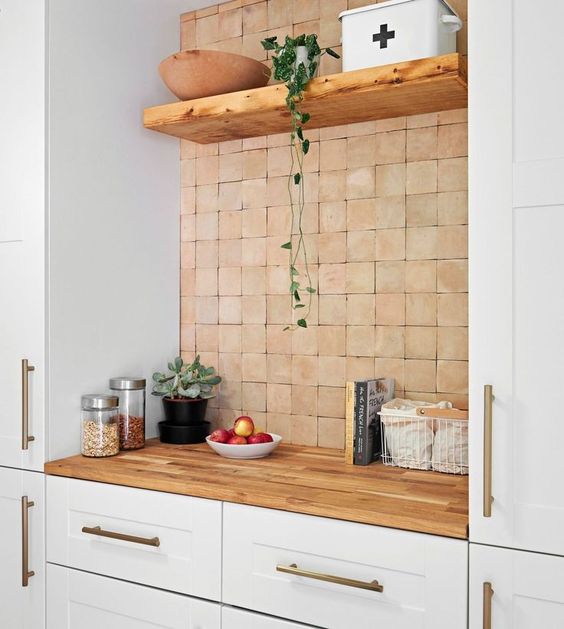
White cabinets, butcherblock countertops and a terracotta tile backsplash make up a cozy and warm combo for a kitchen.
